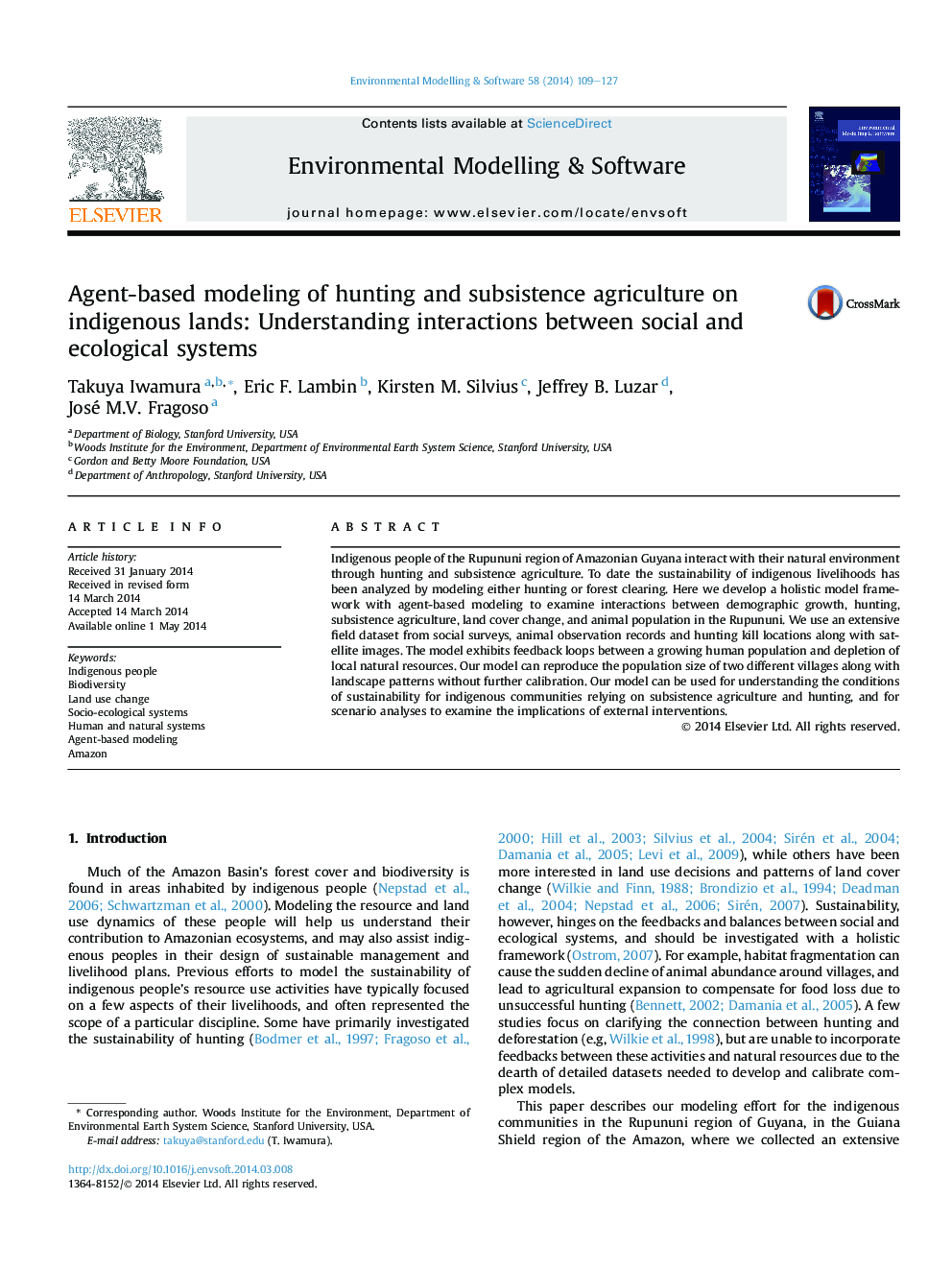| کد مقاله | کد نشریه | سال انتشار | مقاله انگلیسی | نسخه تمام متن |
|---|---|---|---|---|
| 568845 | 1452292 | 2014 | 19 صفحه PDF | دانلود رایگان |
• Our simulation model investigates socio-ecological systems of indigenous people.
• Interactions in indigenous communities are examined with spatially explicit ABM.
• Model parameters and validation were based on field data from Rupununi, Guyana.
• The model could reproduce actual population sizes of two villages.
• The model displays non-linear system dynamics relevant to indigenous land use.
Indigenous people of the Rupununi region of Amazonian Guyana interact with their natural environment through hunting and subsistence agriculture. To date the sustainability of indigenous livelihoods has been analyzed by modeling either hunting or forest clearing. Here we develop a holistic model framework with agent-based modeling to examine interactions between demographic growth, hunting, subsistence agriculture, land cover change, and animal population in the Rupununi. We use an extensive field dataset from social surveys, animal observation records and hunting kill locations along with satellite images. The model exhibits feedback loops between a growing human population and depletion of local natural resources. Our model can reproduce the population size of two different villages along with landscape patterns without further calibration. Our model can be used for understanding the conditions of sustainability for indigenous communities relying on subsistence agriculture and hunting, and for scenario analyses to examine the implications of external interventions.
Figure optionsDownload as PowerPoint slide
Journal: Environmental Modelling & Software - Volume 58, August 2014, Pages 109–127
